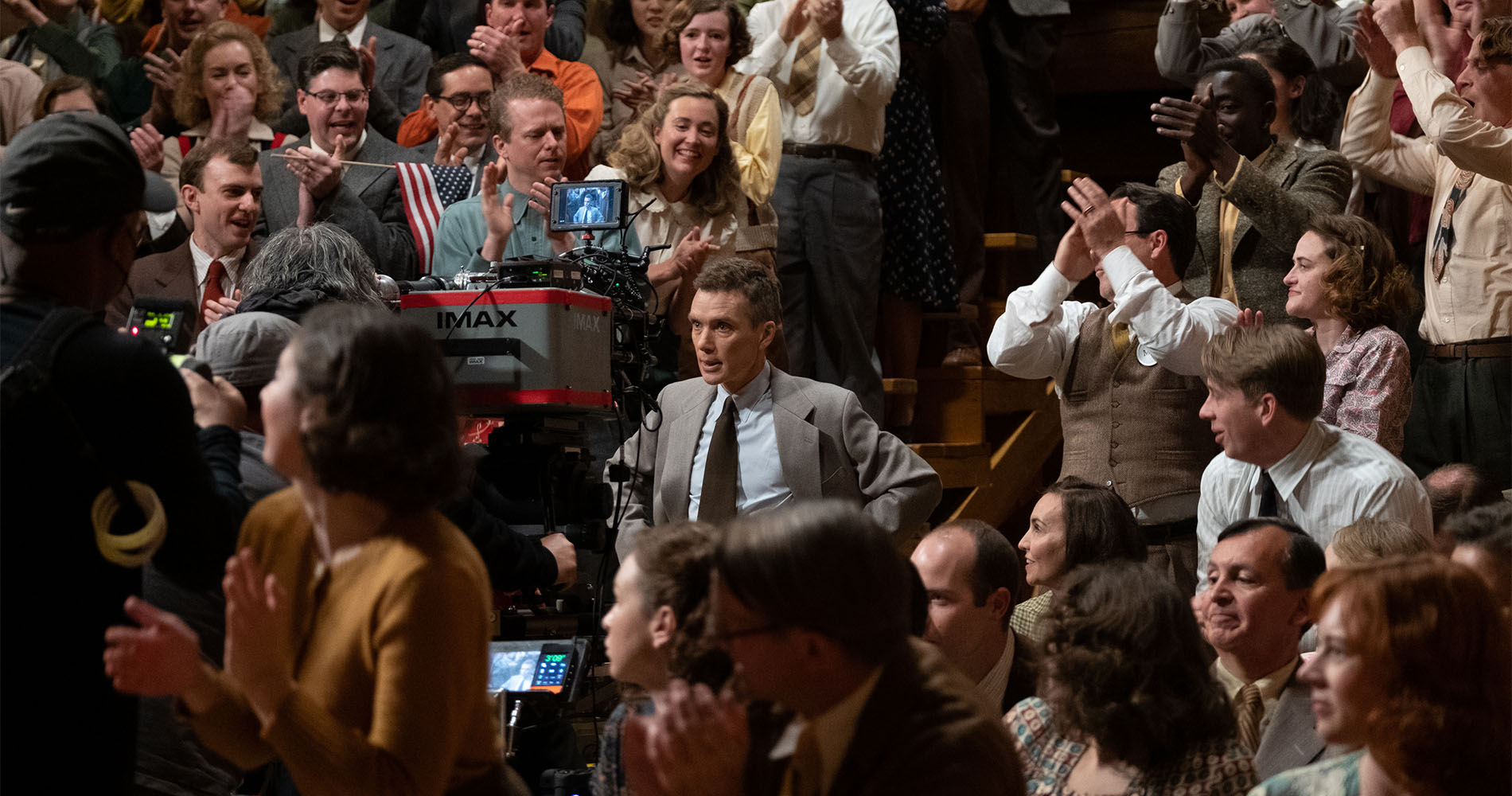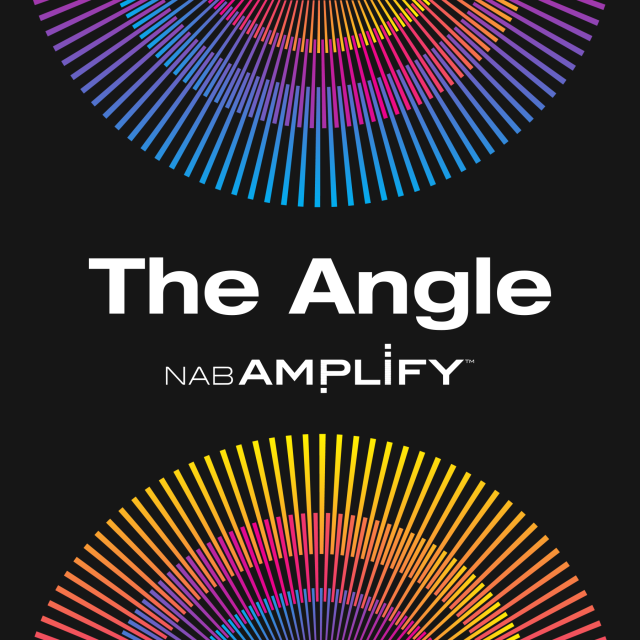
TL;DR
- IMAX to debut a groundbreaking 15-perf/65mm film camera at the 2024 NAB Show, marking a significant innovation in large-format cinematography. The new camera stands out even as digital cinematography dominates the industry conversation.
- NAB Show panel discussion, “SMPTE’s Future of Cinema: The Art and Science of IMAX,” to feature IMAX execs Bruce Markoe and Greg Ciaccio along with Kodak exec Vanessa Bendetti, Academy Award-winning sound mixer Paul Masi, Marvel’s head of finishing Evan Jacobs, and large format still photographer Tyler Shields.
- Register here to attend with code AMP05.
- IMAX’s distinctively taller aspect ratio — 1.90:1 or 1.43:1, depending on the venue — isn’t about cropping and blowing up a standard 2.39:1 anamorphic or 1.85:1 flat image.
- In partnership with Disney and other content platforms, IMAX Enhanced Home format and streaming technology aims to bring the immersive IMAX experience into viewers’ homes.
Watch: SHOOTING “OPPenheimer” IN IMAX
IMAX Corporation, whose large-format cameras rely on motion picture film, has been seen as a significant driver of Best Picture winner Oppenheimer’s theatrical success, and are even unveiling a long anticipated new 15-perf/65mm IMAX-format film camera at the NAB Show.
Bruce Markoe, SVP and head of IMAX post & image capture, will be speaking at NAB Show as part of a panel discussion, “SMPTE’s Future of Cinema: The Art and Science of IMAX,” about various aspects of the company.
Paul Masi, Academy Award-winning sound mixer, will speak about how he optimizes his mixes for IMAX’s proprietary sound format. Evan Jacobs, head of finishing for Marvel Studios, will discuss the multi-phased process of creating IMAX deliverables for their films. Large format still photographer Tyler Shields is set to speak about his preferences for large format film and its advantages over other photographic media. Vanessa Bendetti, head of motion picture & entertainment for Eastman Kodak will be on hand offering her perspective on the importance of IMAX to the motion picture film business. IMAX’s Greg Ciaccio, VP of post production for original content & image capture, will moderate.

While digital cinematography cameras from heavy hitters such as ARRI, Sony and RED (recently acquired by Nikon) will certainly be at the forefront of many conversations at NAB Show, IMAX’s much-anticipated new 15/65mm film camera will also attract a lot of attention.
“We’re planning to have a camera there,” Markoe says. “And we’re getting very close to having the prototype out in the hands of DPs very shortly. So we thought it was a good opportunity to give a little more info and about what the new cameras are going to be.”
Along with the camera, the company will also be unveiling some new digital tools specifically built for finishing IMAX movies.
“People may not realize that basically every movie you see in an IMAX theater is being completely remastered for IMAX,” Markoe notes. “We’re not just using the DCP that’s showing in regular theaters.” Whether shot in 15/65 or digitally, films released for IMAX theaters go through unique post processes, up to and including the film-out stage for exhibition.
IMAX’s distinctively taller aspect ratio — 1.90:1 or 1.43:1, depending on the venue — isn’t about cropping and blowing up a standard 2.39:1 anamorphic or 1.85:1 flat image.
“We are applying proprietary technology to enhance that movie, to look as good as it can on our bigger screens that are brighter and have higher contrast. So, we are making a unique master, both for picture and for sound, because our sound format is not Dolby,” he explains.
“It’s our own proprietary sound format. Done with the filmmakers in complete control of picture and sound. When it’s shot at the [taller] aspect ratio, that’s what you see. So you are really seeing a unique version of the movie in our theaters.”
Markoe, who has an extensive background in post, observes that the increase in resolution between traditional and IMAX can mean that aspects of the image that look great in a standard film or digital presentation might become obvious problems in a large format screening.
“Often,” he says, colorists or VFX artists will add digital film grain in post, “which on most theater screens will look good, but then they see it in IMAX, and it’s too much! We are able with the DMR [proprietary digital remastering tool] to feather that amount back to the director’s taste, but we also do that both for our laser and our xenon projector theaters separately to make sure it looks exactly the way they expect it to look in all of our theaters.”
Markoe also touts IMAX’s 5.0 and 12.0 sound system as providing a unique audio experience. “It is sub-bass managed so it doesn’t use a discrete subwoofer channel,” meaning that there is no audio channel specifically dedicated to the lowest frequencies as there is in “.1” systems, but the entire spectrum of frequencies is contained in all channels and then everything below the cutoff frequency of 70Hz is sent by the playback system to the subwoofers.
“We actually have more powerful subwoofers than any Dolby Theater out there. We have bigger subwoofers and more of them with more amplification and the whole system allows for a kind of low. The low end in our art theaters can perform in a way that other theaters can’t, which is another thing that Chris Nolan loves about [IMAX]. “
While IMAX has been in the news recently because feature films released in the format — such as Oppenheimer, shot in 15.65, and Dune, shot digitally but remastered and released for IMAX theaters — they are still committed to overseeing the kind of documentary specialty film they built their reputation on.
“We have documentaries, original documentaries, film for IMAX program,” Markoe explains. “Our Blue Angels documentary is coming out this year. We went through and tested eight different cameras to make sure that the camera in the cockpit looks best in IMAX.”
Cacciao adds, “Documentaries are something that we’ve made from the very beginning. There were a few years recently where we made very few. We’re now making more documentaries and we’ve started producing more content and acquiring and distributing a lot, too.”
While IMAX’s primary claim to fame is based on super-sized theatrical experiences, the company has also been developing digital tools for enhanced home viewing. They will have a presence at the show where people can learn about developments with IMAX Enhanced Home format.
In addition to its focus on large neg and prints, IMAX will also be at the show with developments for home entertainment viewing, including IMAX Enhanced Content for optimized 4K HDR presentation at home, and its IMAX Streaming technology designed to optimize streaming of audio and video used by Disney and other content delivery companies.

Why subscribe to The Angle?
Exclusive Insights: Get editorial roundups of the cutting-edge content that matters most.
Behind-the-Scenes Access: Peek behind the curtain with in-depth Q&As featuring industry experts and thought leaders.
Unparalleled Access: NAB Amplify is your digital hub for technology, trends, and insights unavailable anywhere else.
Join a community of professionals who are as passionate about the future of film, television, and digital storytelling as you are. Subscribe to The Angle today!


